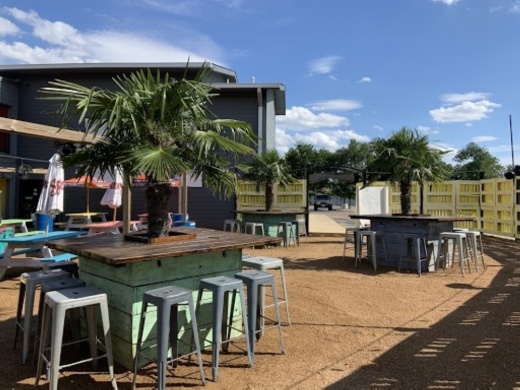During five sessions throughout the day, industry experts delved into the vision for Texas’ future, what makes Texas so attractive to businesses, the future of mixed-use development, office tenants and multifamily development.
Since the COVID-19 pandemic, businesses can now fully open and people are returning to their offices, experts said. However, many restaurants and businesses are still seeking workers to help them get back to full operations.
“The new normal is closer to the old normal than we thought it would be,” said Frank Mihalopoulos, the founder of Corinth Properties. “We lost a lot of businesses, and ... some restaurants are not even open all the hours that they had. We noticed some folks don’t even open in the evenings or on certain days for the longest time.”
The pandemic has also shaped what people desire in their restaurants, workplaces and housing, officials said, with a focus on bringing the inside to the outside, said Andrew Smith, the president of McRight-Smith Construction.
“We're seeing a lot more utilization of the outdoor space and we're seeing a lot of flex use,” he said. “That’s with movable partitions, to-go windows in places you wouldn’t typically see, and with a lot of our new developments these are getting put in right off the bat rather than being an afterthought when a tenant comes in.”
Part of that is an amenity used to attract employees. Company headquarters can be set up in entertainment districts so employees can explore their surroundings on breaks, whether that involves shopping or dining nearby or taking a stroll through a nearby green space, officials said.
“The pre-COVID trend of mixed-use and live, work, play is now accelerated more,” Hall Group Founder Craig Hall said. “In terms of people having the ability to recruit and retain employees was an issue before COVID, it’s a bigger issue now. Labor markets are critical.”
Changes from the pandemic also include a focus on air quality for health and well-being, said Cindy Simpson, the co-regional managing principal of Gensler Architects. Her office has an air filtration system and operable windows, which she said was important for her team to come back following the pandemic.
During the conference’s “The Future Office Tenant: How Will Office Construction, Development and Design Evolve?” session, the panel of developers agreed that most employers seem to be moving their workers back into an office setting.
Perkins+Will Interior Design Director Brigitte Preston said she has heard from a number of companies that workers’ biggest request is flexibility in how often they go into the office.
“We're kind of seeing that three days in the office seems to be the preferred amount of time,” Preston said.
Cushman & Wakefield Executive Vice Chairman Chip Colvill said he believes companies allowing employees to work from home will be a short-term trend and eventually offices will get “back to normal.”
“Most of the people that I've talked to are ready to get back to the office,” Colvill said. “You can't climb the corporate ladder on a video screen.”
Building amenities have remained important to office tenants, according to Dan Jones, senior executive vice president of asset management and construction at Hartman Income REIT Management, Inc.
“We're trying to provide things that our tenants won't have at their house or their home office,” Jones said. “We are putting coffee bars in. We're adding some gaming sections. We take advantage of our air-conditioned space.”
Due to the dropoff in office use over the last 15 months, Granite Properties CEO Michael W. Dardick said he believes demand is going to come surging back over the next year.
“We've got as many job availabilities as jobs [that] were lost,” Dardick said. “That's going to come back much more quickly than a typical cycle. I think 2022 is going to be a banner leasing year. I'm pretty bullish for the Texas area.”






